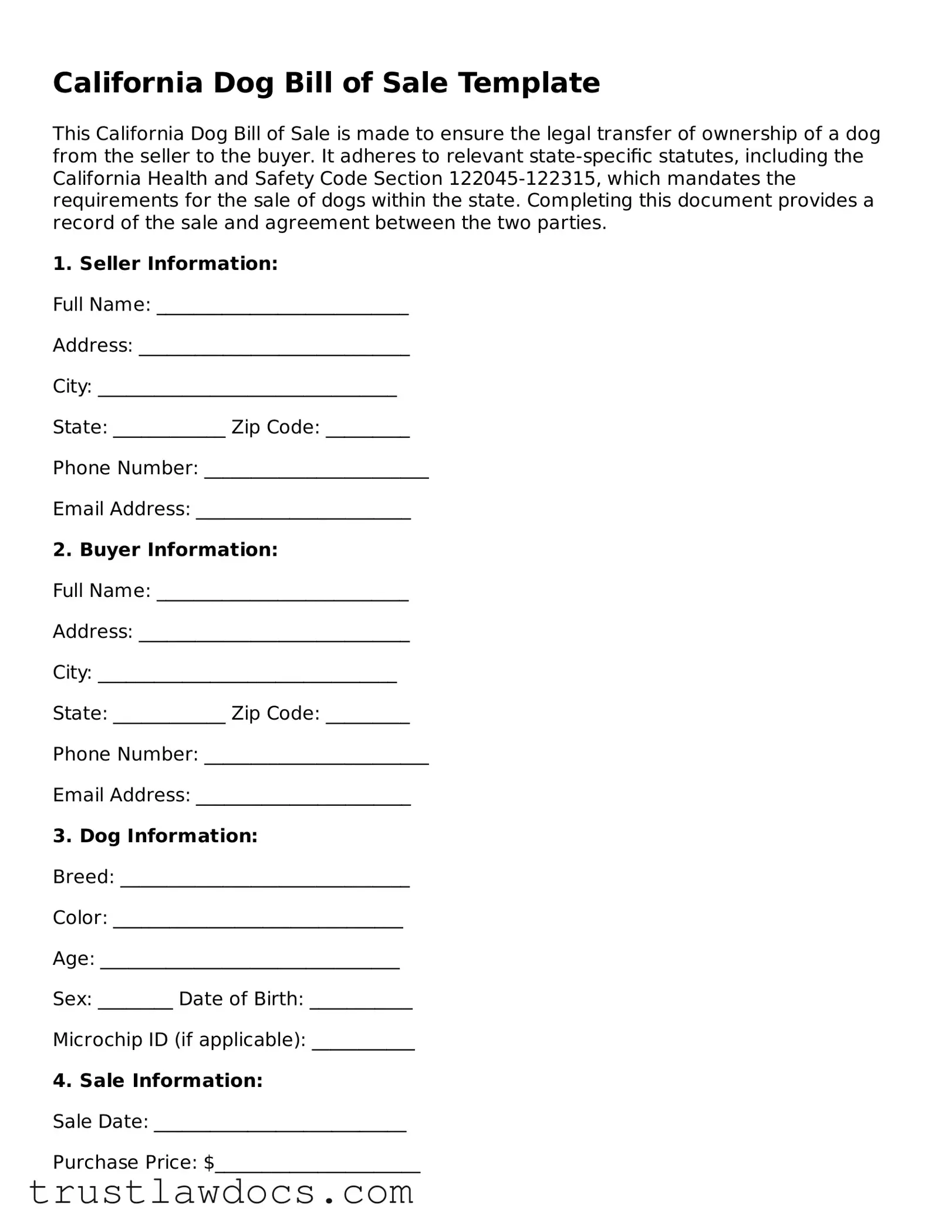California Dog Bill of Sale Template
This California Dog Bill of Sale is made to ensure the legal transfer of ownership of a dog from the seller to the buyer. It adheres to relevant state-specific statutes, including the California Health and Safety Code Section 122045-122315, which mandates the requirements for the sale of dogs within the state. Completing this document provides a record of the sale and agreement between the two parties.
1. Seller Information:
Full Name: ___________________________
Address: _____________________________
City: ________________________________
State: ____________ Zip Code: _________
Phone Number: ________________________
Email Address: _______________________
2. Buyer Information:
Full Name: ___________________________
Address: _____________________________
City: ________________________________
State: ____________ Zip Code: _________
Phone Number: ________________________
Email Address: _______________________
3. Dog Information:
Breed: _______________________________
Color: _______________________________
Age: ________________________________
Sex: ________ Date of Birth: ___________
Microchip ID (if applicable): ___________
4. Sale Information:
Sale Date: ___________________________
Purchase Price: $______________________
Deposit (if applicable): $______________
Remaining Balance Due: $_______________
5. Health Information & Vaccination Records:
At the time of sale, the dog is declared to be in good health to the best of the seller's knowledge. Attached hereto is a record of vaccinations and any relevant health records.
6. Seller's Guarantee:
The seller guarantees the dog is free of all contagious diseases as of the sale date. Any known health issues are disclosed herein: _____________________________________
7. Buyer's Acknowledgment:
The buyer acknowledges receiving the dog's health and vaccination records and accepts the dog "as is" except for the seller's guarantee mentioned above. The buyer agrees to provide proper care, including medical treatment, food, and shelter for the dog.
8. Governing Law:
This Bill of Sale shall be governed by the laws of the State of California.
9. Agreement to Terms:
By signing below, both seller and buyer agree to the terms and conditions set forth in this California Dog Bill of Sale.
Seller's Signature: ______________________ Date: ____________
Buyer's Signature: _______________________ Date: ____________
